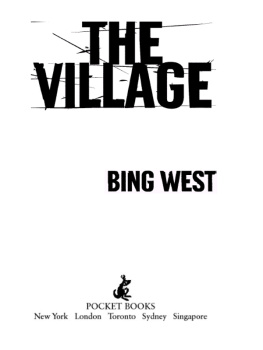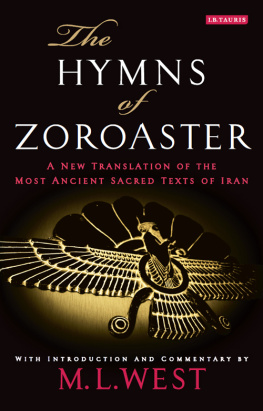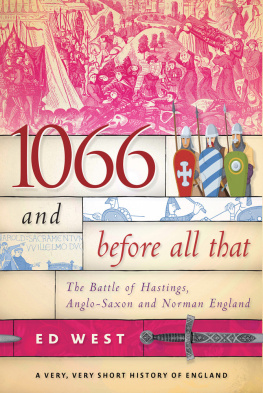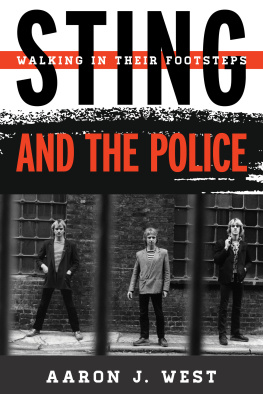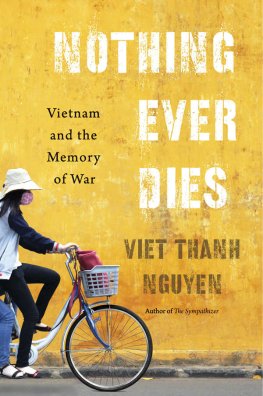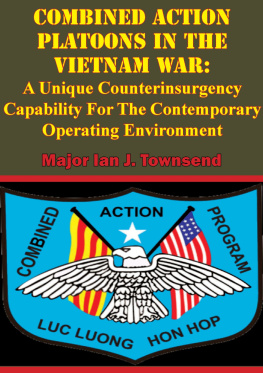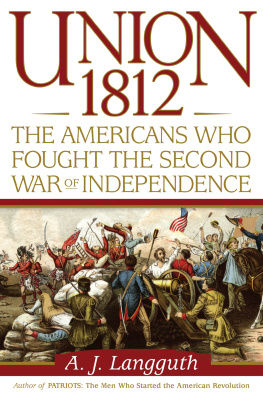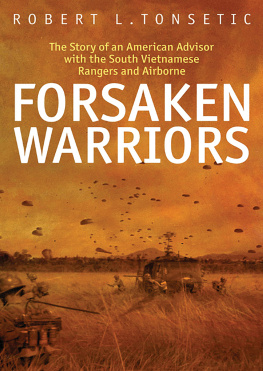Foreword
by Former Secretary of Defense
James R. Schlesinger
It is now some eighteen years since a young, exMarine captain joined us at the RAND Corporation. I for one found his writing absorbing. It was different from the torrent of Vietnam analysis in two respects. First, it was descriptive and concretesimple vignettes that hinted at, but did not state, larger conclusions. The writing was sparse: stripped of those grandiose strategies or clichs (it is sometimes difficult to identify which is which) that frequently pass for wisdom at higher levels of government. West left the theorizing about grand strategy to others; not for him that American proclivity to impose the big picture from above. Second, his prose had a haunting qualitynoticeably different from the rather sterile bureaucratese one so frequently encountered in RAND memoranda.
The splendid thing about this volume is its lack of pretense. West provides a remarkable portrait of the ethos of the Vietnamese countryside and a sense of what life in conditions of war was really like. Binh Nghia is a microcosmwith the generalized and parochial distrust of all outside forces characteristic of such a village. Since the war raging about the village was primarily a civil war, certain rules of the game to limit damage or reprisal against family and bystanders were unavoidable. The famous hearts and minds of the Vietnamese villagers could scarcely be won unless the government could provide security. Therein lay the crux of the pacification program. The village war would determine the outcome of the civil war. The ultimate failure of the Viet Cong in the village war meant that Hanoi could only triumph through direct invasion: the eighteen line divisions of the North Vietnamese Army that finally crushed the GVN in the spring of 1975.
The American attempt to shore up South Vietnam led to divisions in this country of a type that we had not seen in this century. Other warsthe War of 1812, the Mexican War, the Spanish-American Warhad caused domestic divisions. But none had dragged on for a decade, and so those earlier tensions had been more rapidly dispelled. For the nation, Vietnam did not provide the unifying and exhilarating affect of World War II. Returning veterans were staggered, quite understandably, to discover that, having served God and Country, they were not received on their return with the usual acclaim. Protests about the war spawned ideologies, rather narrow minded ideologies at that. Put briefly, everything about Vietnam had to be rejected. The result was a shunning of this excellent book. Fashionable journals declined to review it.
I can well recall at the time Wests disappointment at this rather unfair treatment. His work was largely descriptive and certainly nonideological, but it had been swept up in the larger ideological passions. Yet, as the bitterness of that earlier debate fades, this little study has finally come into its own. I can recall telling West in the early 1970s: do not worry; this is the classic description of the war; your book will eventually receive its just duea decade from now, indeed half a century from now, those interested in the war will be reading your book to discover what it was really like. I believe that experience has justified that prophecy.
JAMES R. SCHLESINGER
JANUARY 1985
Dr. Schlesinger was Secretary of Defense in 1975, when South Vietnam fell. Prior to that, he was Director of Central Intelligence.
Authors Preface
This is the story of fifteen Marines who lived and fought for two years inside a Vietnamese village. There was shooting almost every night; from across the river a seasoned Viet Cong battalion attacked repeatedly. In this village, the South Vietnamese farmers planted rice during the day and after dusk patrolled with the Marines.
When this book was first published, emotions over Americas role in Vietnam were heated and some critics refused to review The Village . Others wrote that Marines could not have lived for years protecting villagers from the Viet Cong and from the North Vietnamese. Yet despite the skeptics, at the height of the Vietnam War a dozen U.S. Marines did live in the village and were generally accepted by 6,000 Vietnamese farmers.
This is the story of one squad of Marines who spent over two years in the village of Binh Nghia (BEEN-KNEE-AH) and experienced some of the most intense and sustained small unit fighting throughout Vietnam. Reasonably, the Marines were too far outnumbered to survive and push out the guerrillas. The squad, despite its losses, never believed that. To stay alive, they used the tactics of the guerrillas.
To understand the reasons for the continuous combat and to decide whether to leave a Marine squad alone in such a village, the Marine command had sent mean infantry captaininto The Village in 1966, although a squad ordinarily was led by a sergeant. While I led many of the patrols described in detail in the book, this story belongs to the men of the squad. So in writing the story I functioned simply as an unnamed character and also as the cameras eye. I tried to describe how we foughtnot whyand I let the descriptions stand alone, without editorializing about the emotions and the hardships.
The Village is a description, as best as I could relate as a participant, of what war is like when you fight guerrillas, and of how Americans behaved when they volunteered to fight among the people. It was a bloody and intensely personal war. The Marines fought well while they were there; the village remained intact, out of bounds both to American air and artillery strikes and to North Vietnamese force and rule.

